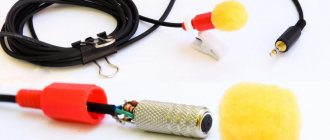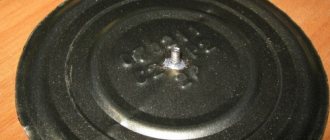A smiling face, round blue eyes, a bright outfit and an amazing ability to return to its original position. Grandparents of today's hyperactive toddlers, cheerfully and surprisedly trying to knock over their favorite toy, remember very well the “Vanka-Vstanka” of their childhood. The tumbler doll was one of the first entertainments for several generations. Today's "somersaults" can differ significantly in appearance, but bring the same joy. You can make a toy with your own hands. Available materials, a small amount of time, imagination - the tumbler doll toy is ready.
Facts and legends
The toy owes its origin to the mysterious East. Legend claims that the prototype of “Vanka-Vstanka” was an ancient Buddhist monk who observed a vow of silence and immobility for a decade, as a result of which he lost his arms and legs. Then the tumbler doll, the description of which is found in ancient books, came to Japan, which had been isolated from the rest of the world for a long time, receiving the name “darum” after the name of the hermit monk. The toy is credited with the ability to make wishes come true. Eyes are not drawn on the face. The recipient of a daruma draws one eye, making a wish; its fulfillment is marked by the other eye. Otherwise, the tumbler is burned, following traditions, on the eve of the next New Year. Travelers brought this original children's entertainment, which has become a favorite for many generations, to Europe and Russia.
The Russian version received a head, a cheerful smile, and national clothes. A headdress and a musical instrument appeared. The stabilizing abilities and noise effects were appreciated. Soviet industry made mass production of “Vanka-Vstanka” for many years.
Learning by playing
The six-month-old baby happily plays with the new “Vanka-Vstanka”. At the same time, it distinguishes the volume of sound when rocking, develops fine motor skills, happily rocking your pet.
The two-year-old future man gives his favorite toy “tasks” - to guard the castle, the young lady teaches how to sit at the table correctly, monitor behavior, repeating the rules that she hears from her parents. Description of a toy, learning to count, and much more are much more enjoyable to learn with your favorite tumbler.
Fantasy and creativity
Those who like to craft from wood can carve a hollow toy from suitable wood, install a sinker, decorate it, and varnish it. Such a souvenir will be an excellent gift not only for a small child, parents will be happy to receive a masterpiece specially made with their own hands.
An original figurine for the holiday is made from an ordinary eggshell. The insides are blown out or poured out, the resulting container is washed, a small weight (nut, heavy bead) is carefully lowered down, and secured with wax or paraffin. The first method: drip with a candle until the entire weight is covered, the second: finely chop the wax, pour it in and warm it over a low flame, after securing it in the correct position. When the base has hardened, draw a smiling face, put on the finished hat, cap, bow - a unique gift is ready.
Branded toy
The classic face of your favorite toy has long gone out of standard execution. The tumbler doll, a photo of which can be seen in the article, depicts your favorite cartoon character, the hero of a computer game. The author's imagination helps to give the tumbling doll the features of his beloved offspring, which will make the game more exciting. A lightweight ping pong ball will make the toy convenient and compact for little ones. Small sizes will allow you to make a swinging “family”. By painting the little people with different colors, drawing numbers or letters, they create an additional educational gaming tool.
Functional souvenirs
Childhood memories are the most vivid. The first toy is associated with joy and good mood. A tumbler doll, given to a friend or loved one for a birthday or family holiday, will strengthen warm relationships. A souvenir can carry a functional load. By placing a small clock mechanism in a tumbler, they build an excellent alarm clock that always keeps its balance. A young mother will be pleased to receive a sippy cup for her baby as a gift. The whole trick: a rounded base with a weight is glued to the bottom of the plastic cup, which prevents the dish from falling, maintaining balance.
Source
Tumbler doll: history, description. How to make a tumbler?
A tumbler doll is a toy familiar to everyone from early childhood. Bright, smiling, always ready to play with the baby, is considered the safest. Promotes the development of coordination, imagination, hearing, and color perception. The child never gets tired of watching the tumbler doll rise from a lying position. In our country, these toys are also called “Vanka-Vstanka”. It’s interesting to know what the history of the tumbler doll is and whether it’s possible to make one yourself.
Design tricks
The tumbler doll has a simple round shape. The main feature - rising from a lying position - is due to the physical principle of stable balance. The correct placement of the load inside the lower part of the daruma is the main rule of manufacture. Guided by this law, it is easy to determine how to make a tumbler doll that takes a vertical position, swings in different directions, and turns around its axis.
- Vertical lift: the load is placed at the bottom of the cavity, being sure to fix it motionless (filled with paraffin, wax).
- The “swinging somersault” is performed by securing the load to a flexible base.
- By adding a rigid pin with a hinged mount, rotational movements are achieved. By creating a complex trajectory for the weight to advance, you can “teach” the tumbler to turn and swing at the same time.
- Craftsmen attach a weight, connect it with an elastic thread, a thin spring with arms and legs. The tumbler doll balances like an acrobat and takes steps.
- The pinnacle of the art of making modern daruma is ferromagnetic fuel. A suspended magnet helps the liquid flow, Vanka-Vstanka dances.
Story
Experts suggest that the very first toys were brought to Russia from Japan. It is believed that the idea came from the hermit monk Bodihidharma, who lived in the 6th century. He came from India to China to form the Buddhist sect "Zen", which means "meditation, concentration." The hermit, who was named Daruma, prayed for 9 years, eventually arriving at enlightenment. All the years he did not move or blink (according to legend). Due to prolonged immobility, the monk's limbs withered, so the Japanese tumbler doll is made without legs and arms.
Principle of operation
The tumbler always stands upright. To do this, the design of the toy must meet the following condition: the center of gravity is located in the lowest place. If any attempt to change the body of an object leads to a rise in the CG, the equilibrium is stable.
At the bottom of the tumbler doll there is a heavy hemisphere. At the slightest tilt, the center of gravity of this hemisphere rises.
Previously, a bell was inserted into the toys, which rang with every movement of the somersault. But today's toys make chimes for a completely different reason: there is a metal or cardboard cylinder fixed inside, in which the ballast is placed. Metal rods are inserted around the circumference. In the middle, a metal plate is suspended on a wire, which hits the bars - this is the sound that the tumbler doll makes.
Today, a doll can be made of any material and have different types. This could be a hero from your favorite cartoon or computer game, a superhero from a comic book, or a fantasy creature. But there are also tumblers that depict real people, most often these are political leaders of various countries.
Toys are made from plastic, wood, glass, metal, and scrap materials.
Tumbler in action
The tumbler effect finds its application in everyday life.
Here is a non-tipping mug for children, in which the pacifier will not lie on the table. A watch that will always be in a vertical position.
Or an iron, which is difficult to forget on an expensive dress, because it rises to a non-working position as soon as you let it go.
But here is an unusual case for a mobile phone, which is more difficult to lose in the surrounding space, because it, like a float, tends to take a vertical position.
How to make a tumbler yourself
A great gift for any child is a tumbler doll. How to make it? Very simple. The child will especially like it if he takes an active part in its production. To create the simplest small Vanka-Vstanka, you need an ordinary chicken egg, a candle and heavy metal objects: nuts, ball bearings.
To prevent the load from moving inside the egg, it must be strengthened. This can be done in two ways: 1. Light a candle, tilt it over the egg and drip paraffin until it completely covers the load. 2. Finely chop the paraffin from the candle, pour it into the egg and gently heat it over the fire until dissolved. Then let it harden and cool.
You need to pour or drip paraffin so that the load remains in the middle of the bottom of the egg. After the candle material has hardened, you need to finish the toy: cover the hole with a hat or hair made of threads, draw a face and clothes.
Now the tumbler can be placed in any position - if it is done correctly, it will always return to a vertical position.
You can make a toy not only from eggs, but also from other materials. You can, for example, use the packaging of a surprise chocolate egg instead of the shell. You can stick on the eyes using blisters from tablets. You can attach various objects to the shell or packaging using PVA glue.
Have you recently become a mother of a baby?
Row 6: (1 dc, 2 dc in one loop of the previous row) * 6 = 18 dc.
7th row: 18 st.b.n.
Row 8: change the thread to the third shade, 18 st.b.n.
9th row: 18 st.b.n.
Row 10: (2 dc, 2 dc in one loop of the previous row)*6 = 24 dc.
Row 11: change the thread to the first shade, 24 st.b.n. etc.
When the cone reached the height I needed (I tried it on according to the width of the egg, so that the egg began to narrow below the edge of the knitting), I knitted a couple of rows with decreases and started working on the barrel. The trunk was simply knitted in the round with brown thread, adding 6 st.b.n. in every second row. (in general, here I already knitted by eye, trying on the base of the egg.
I connected the two parts of the Christmas tree with one row of single crochets, having first filled the top of the Christmas tree with a rustling bag and inserted a tumbler egg inside.
Our Christmas tree is ready! Vasilisa and all of us really liked her. And you? You can see our tumbler Christmas tree in action on my Facebook page - here.
A tumbler doll is a toy familiar to everyone from early childhood. Bright, smiling, always ready to play with the baby, is considered the safest. Promotes the development of coordination, imagination, hearing, and color perception. The child never gets tired of watching the tumbler doll rise from a lying position. In our country, these toys are also called “Vanka-Vstanka”. It’s interesting to know what the history of the tumbler doll is and whether it’s possible to make one yourself.
Toy piggy bank “Tumbler” made from waste material (middle group)
Prydikhina Natalya Yurievna
Toy piggy bank “Tumbler” made from waste material (middle group)
Recently I went into a building materials store and saw workers removing a linoleum sleeve from the display case. And having learned that the bushing would be thrown away, I asked to put it aside. The next day, our physical education instructor and I already picked up two bushings. Larisa Viktorovna left one for the gym to make posts for running around a snake. And the second one, I asked one parent to cut into rings. These rings became the basis of the craft.
Tumbler toy.
Materials for crafts : linoleum sleeve (cut into 5 cm rings, colored cardboard, white paper, scissors, PVA glue, felt-tip pens.
I glued the face onto the head and drew out facial features with felt-tip pens, and glued the arms on both sides of the body. The body can be decorated with “buttons”
.
I smeared the bushing ring along the cut line with PVA glue and glued it on the back side to the body Tumblers closer to the bottom edge (so that when swinging toy returned to its original position).
Then I smeared the ring with glue on the other side and glued the back of the Tumbler . This is how the Tumbler toy .
Tumbler piggy bank.
The sequence is the same as when making the Tumbler toy .
Just to make a piggy bank, before gluing it to the sleeve, you need to make a slot for money Tumbler's Now, for beauty, we glue an apron under the slot.
The Tumbler piggy bank is ready . When the piggy bank is full of money, simply tear off the back, take out the money and seal the piggy bank with a new back.
All the guys did an excellent job. They really liked that they could play with the craft.
Children's master class "Fire Truck". Craft made from waste material and plasticine (middle group) The red car is in a hurry, Without turning off the headlights, To do dangerous duty, In a hurry to put out the fire! On April 30, Russia celebrates Firefighter Day.
What does the Vanka-Vstanka toy look like today?
The image of a modern doll can be different: a matryoshka doll, a little girl or a national soldier, etc. All these toys are hollow, and their lower part resembles a ball. There is a sinker inside the ball, due to which the center of mass is located at the bottom. When trying to knock down a doll, the height of the center of mass increases. As soon as the tumbler comes into contact with the ground, a force begins to act on the toy, returning the tumbler to its original position. The action of the force is explained by the fact that it moves away from the point of contact with the surface on which the tumbler falls. The description of the Vanka-Vstanka doll corresponds to the laws of physics on the balance of bodies.
There are unstable, indifferent and stable equilibrium. In the first case, the body begins to move when exposed to it, changing its position in space. Indifferent equilibrium is said to occur when a body remains in place even if touched or slightly pushed. Maintaining a stable balance, the body always returns to its place. This is possible if the center of gravity is at its lowest position. In a vanka-stand, the center of gravity is located at the bottom, and the load is located approximately in the middle of the ball.
The design of the vanka-stand discussed above is the simplest. Today you can find improved versions of the doll. Vanka-Vstanka is a toy that not only stands up on its own, but also swings funny in different directions and tries to dance. If you place a deep pin inside the doll and attach a weight to it, the tumbler will perform complex oscillatory movements. Standing vans, in which the load is attached to a hinge pin, are able to rotate around their axis.
Another version of the tumbler is a bear cub with a spiral located inside. The balls roll over it, causing the bear to swing, turn around itself and in the opposite direction. Some roly-polys successfully balance with their hands. It seems that the doll can keep its balance. The principle of operation here is this. The weight is connected to the hands using an elastic thread. During movement, the tumbler's arm rises in the direction opposite to the tilt. If you attach legs to the toy, it will be able to move short distances.
Traditionally, the load of a vanka-stand is a lead ball. But the engineers went further and designed a doll with a magnet inside. It turns out that, together with the tumbler, a magnet also acts on it. The magnetic field helps the van move smoothly. It seems that the doll is dancing. The description of the Vanka-Vstanka doll with a magnet will probably resemble a story about the movements of a ballerina.
Vanka-Vstanka from an egg
I am pleased to present you with another post as part of a joint project with Maria Yunak “Fairy Tales and Experiments”. Last time, as part of this project, I wrote about magnets. And today I want to talk about a funny children's toy that demonstrates the physical concept of balance
. I'm talking about the tumbler or, as it is also called, Vanka-Vstanka.
| Physical toy Vanka-Vstanka |
| Tumbler in a Greek costume. Book illustration from the 19th century. Figure from Wikipedia |
| Japanese folk daruma doll. Photo from Wikipedia |
Everyone probably knows S.Ya.Marshak’s children’s rhyme “Vanka-Vstanka”.
He was treated by a doctor from a children's hospital. He said the following words to the patient: “You, dear one, are not comfortable because your head is too light!”
This poem perfectly explains the physical reason why a tumbler doll cannot be put down. The fact is that all bodies strive to achieve an equilibrium position
. That is, a situation where the action of some forces on the body is compensated by the action of other forces or there are no forces at all.
Unstable
equilibrium will occur when the displacement of a body by a small distance leads to its movement. For example, if you touch a ball lying at the top of a slide, the ball will roll down and will not be able to return to its previous position.
Master class on how to make Vanka-Vstanka
For this we need: An egg, several heavy small objects (nuts, screws, metal balls) and a candle.
So our Vanka-Vstanka is ready!
And also toys on the theme “balance”
" can be seen here: Squirrel, ballerina, butterfly, potato bird.
Origin of the tumbler
It is believed that the tumbler came to us from Japan. There it had a round shape and was called Daruma. It was believed that such a doll brings good luck. Darumas with unpainted eyes were sold or given as gifts. When making a wish, the Japanese painted over one of the doll’s eyes, and when it came true, he painted over the second. Our Vanka regained his head and appeared at fairs at the beginning of the 19th century.
This Vanka was turned out of linden on a lathe, a lead weight was inserted into the lower part and the doll was painted with bright colors. It would seem, how else can you improve the simplest ball with a load? Engineering thought has reached Vanka-Vstanka.











